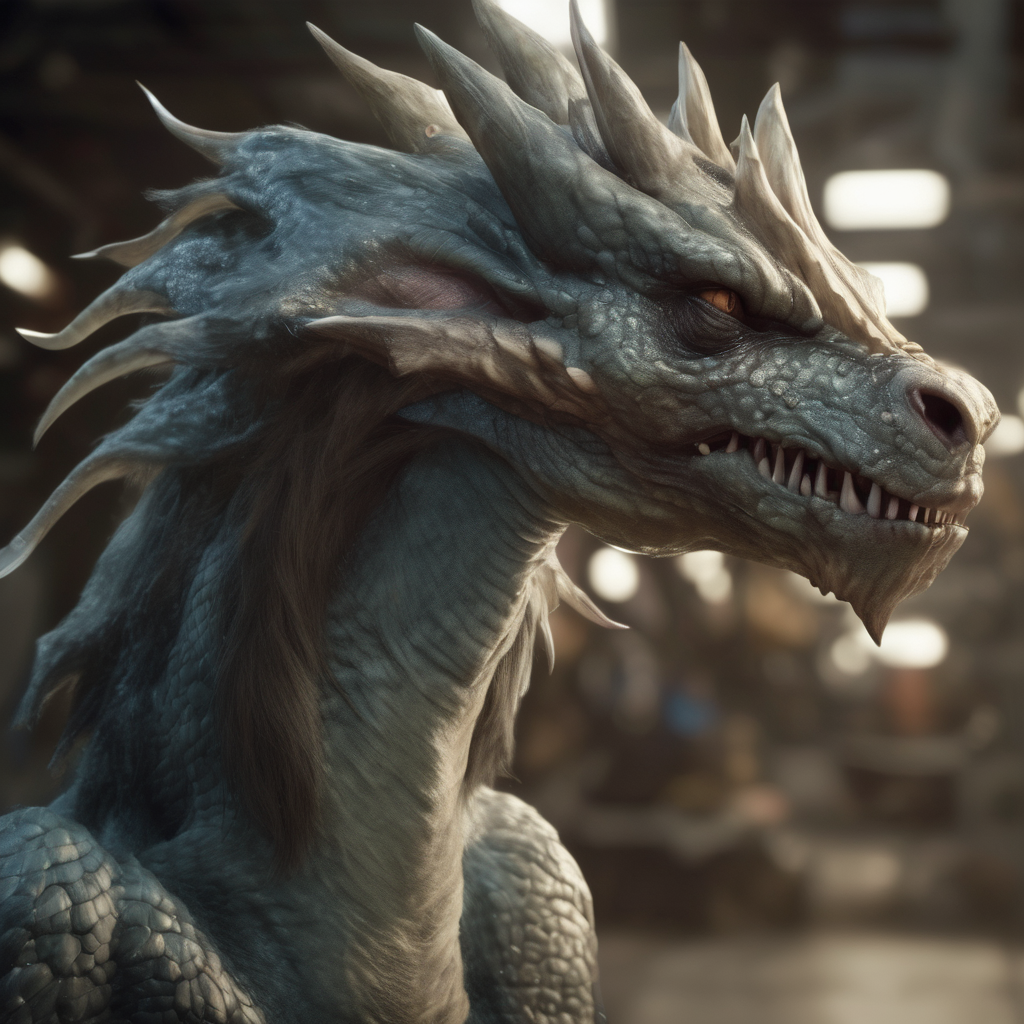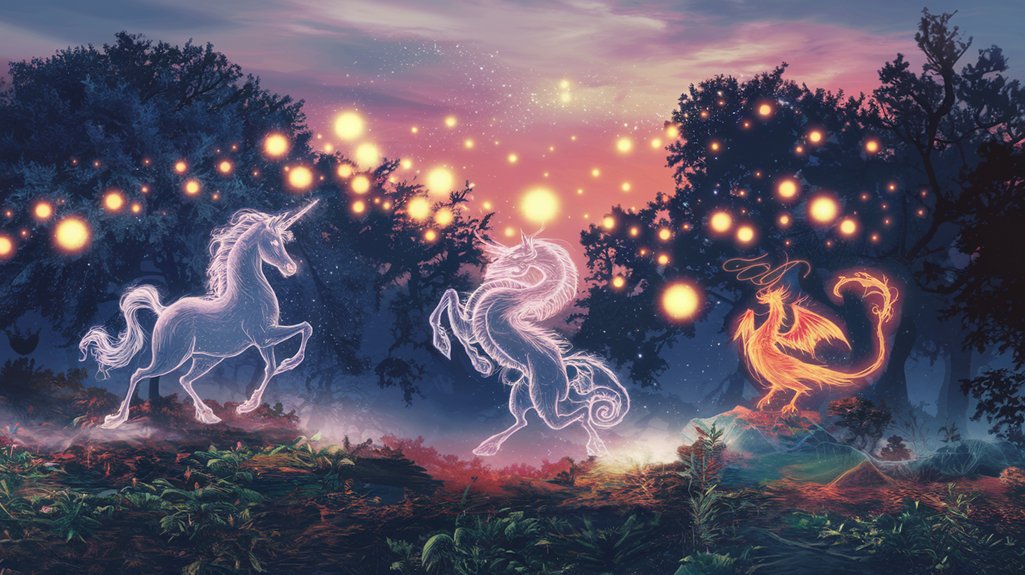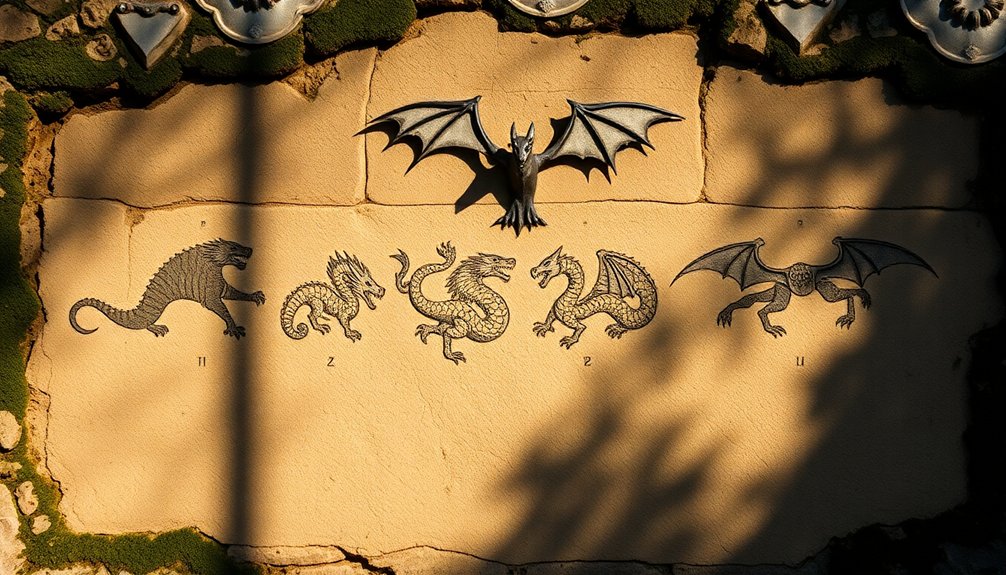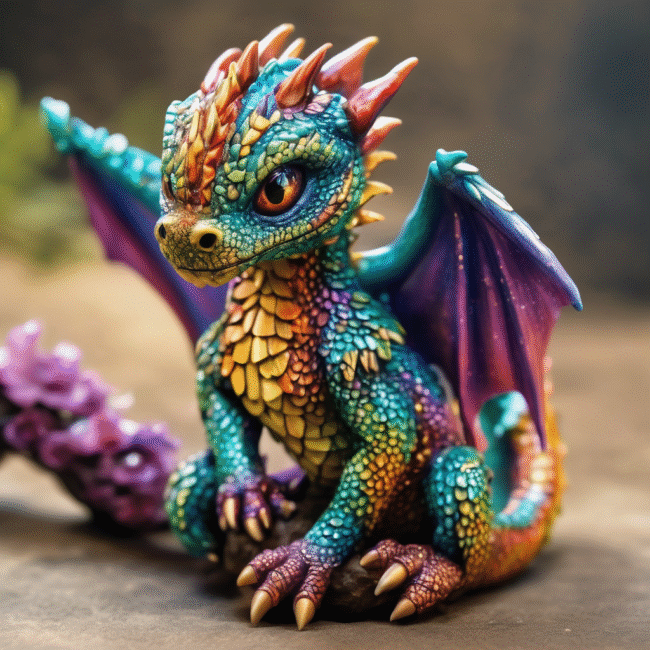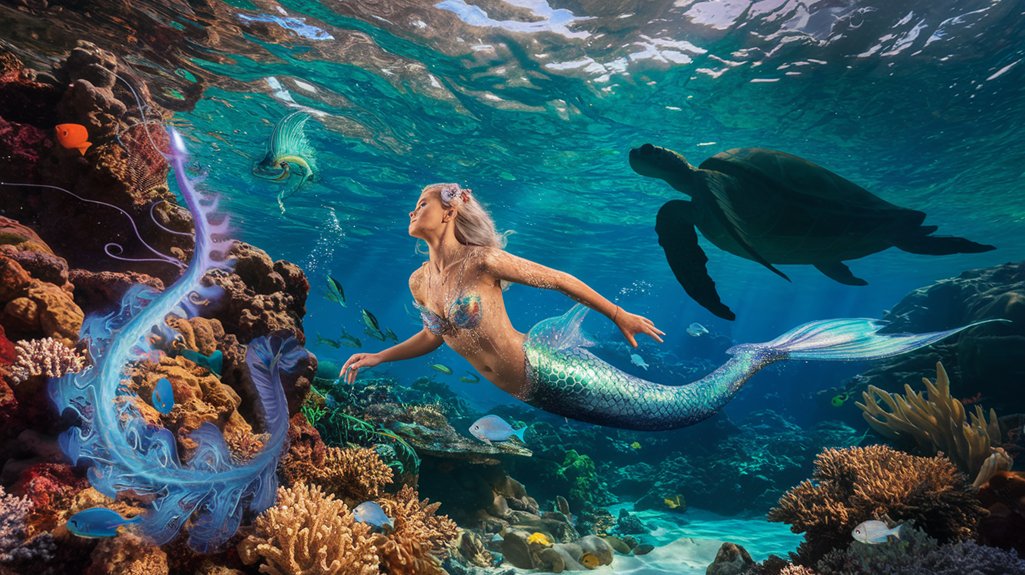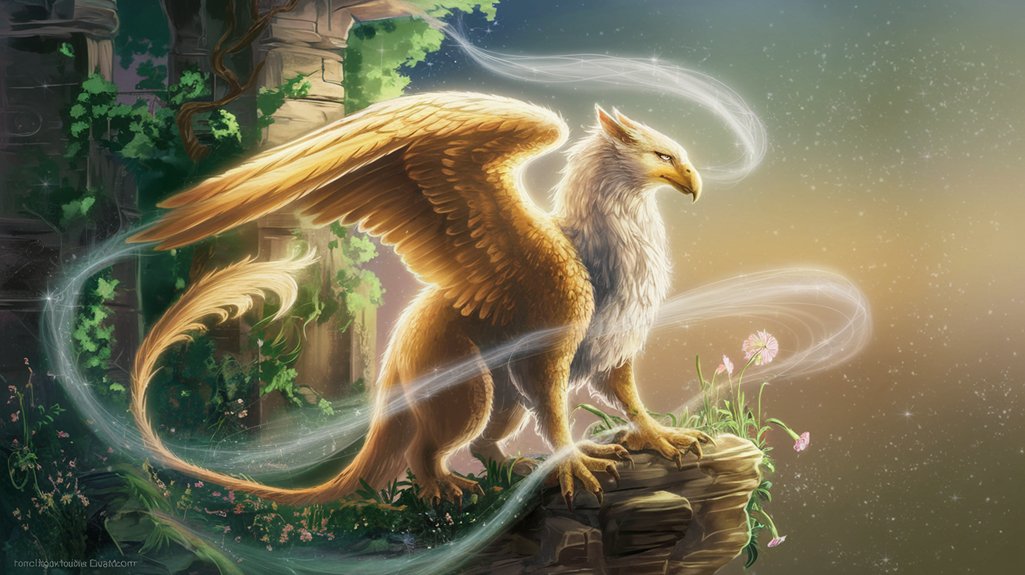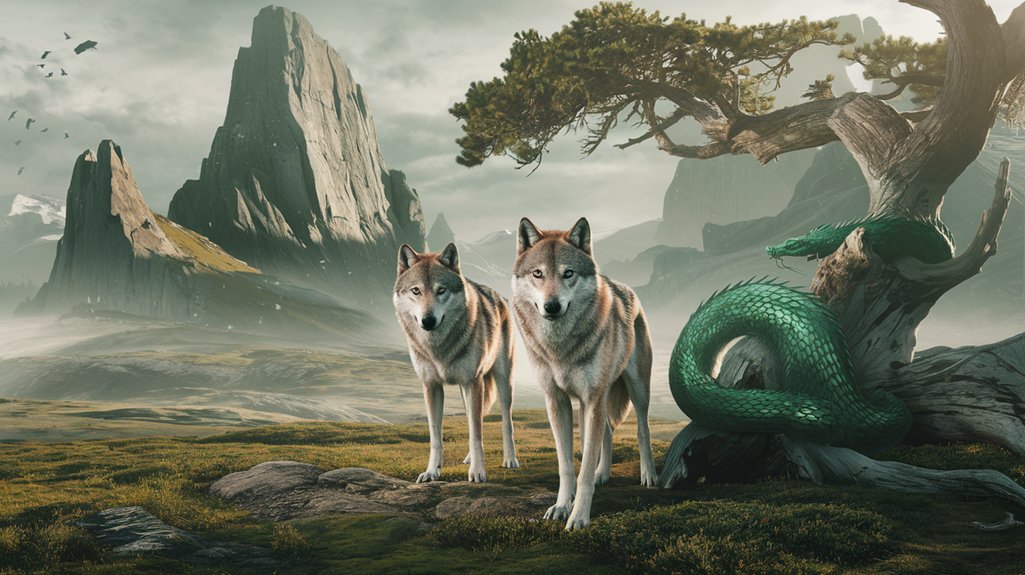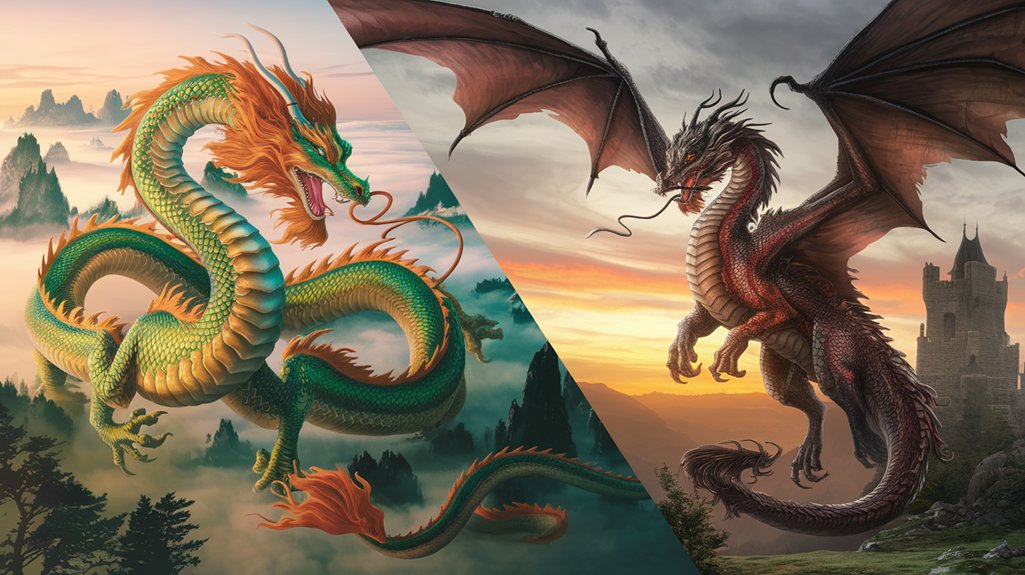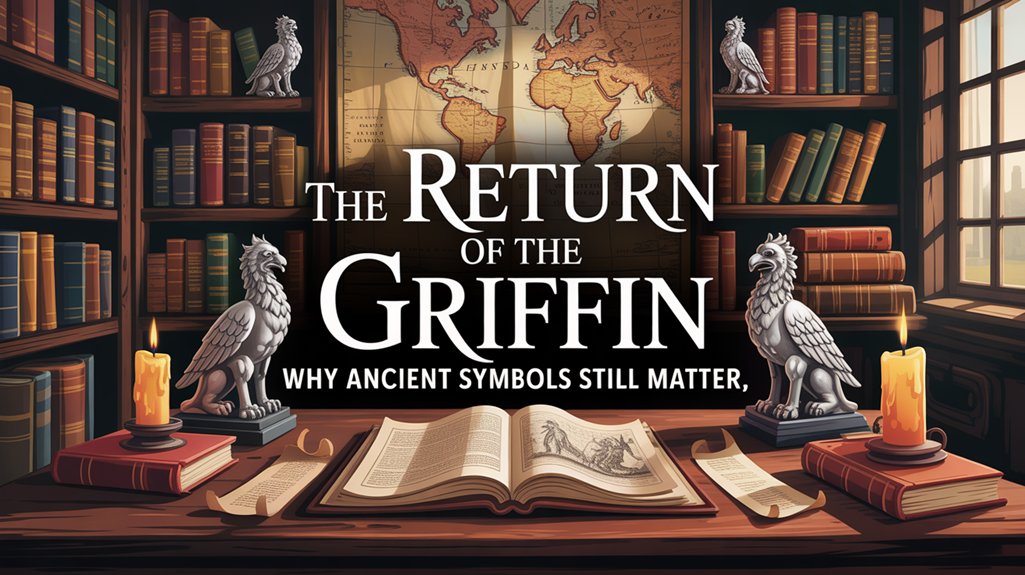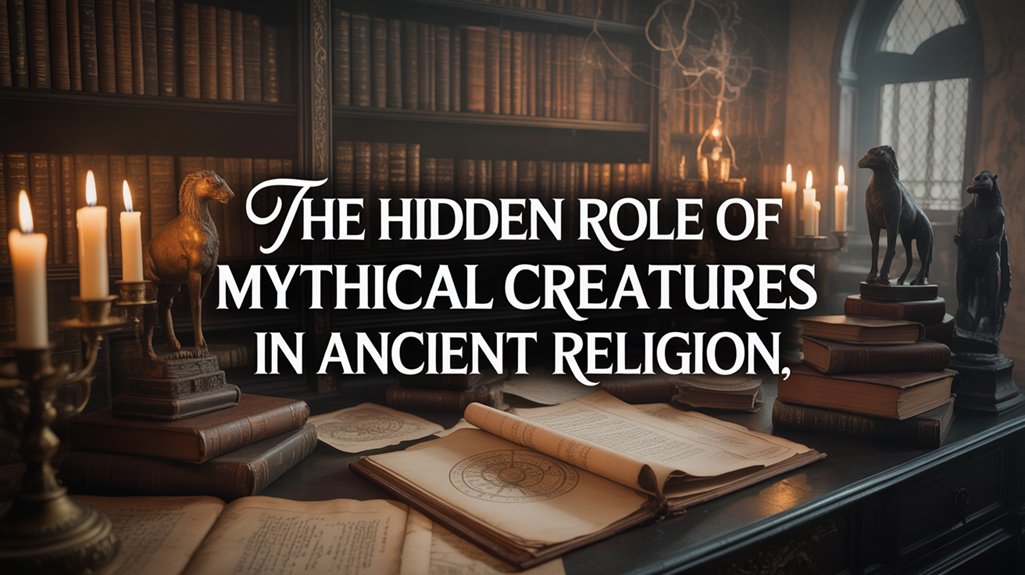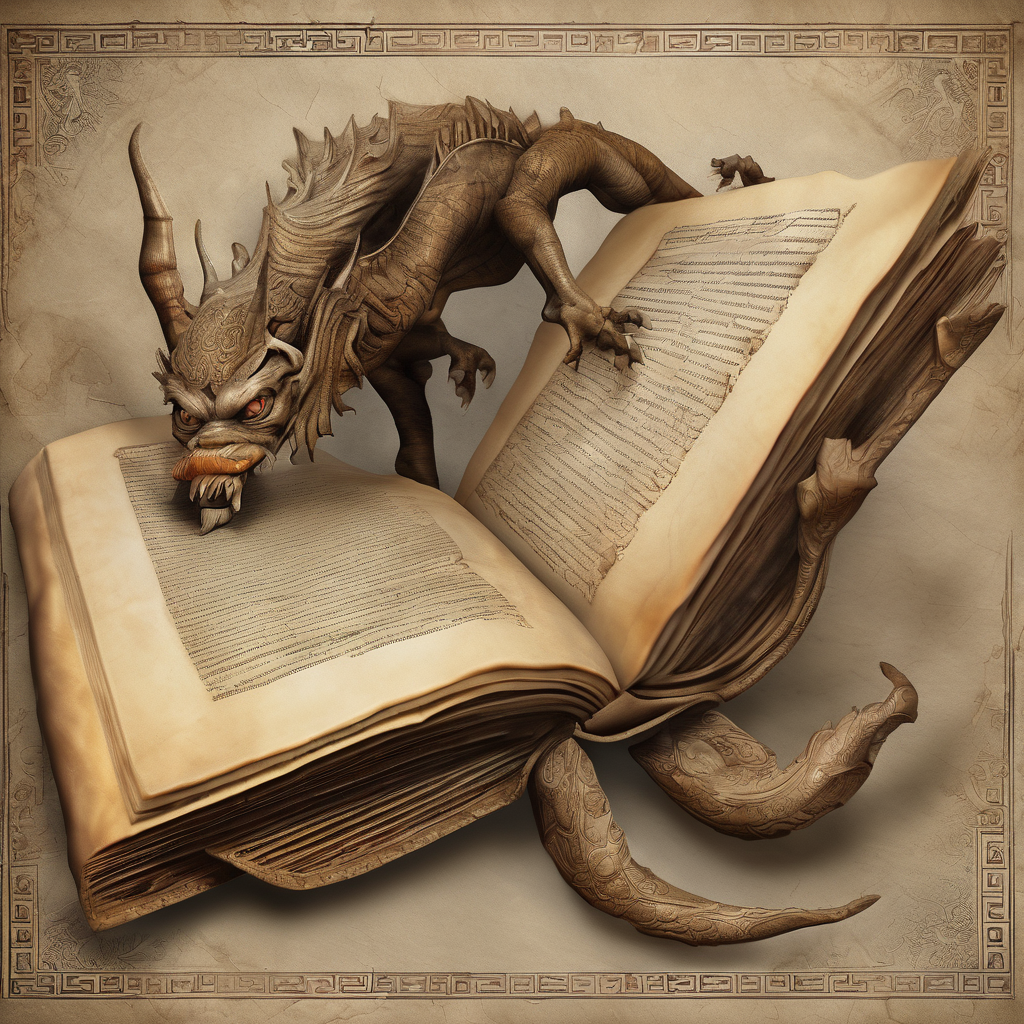
Have you ever wondered where your favorite movie monsters really come from? Many of the terrifying creatures you know today have roots in ancient myths and legends.
These mythical beings shaped the monsters that haunt our stories, games, and dreams. By exploring the top 10 mythical creatures that inspired modern monsters, you’ll discover surprising connections and hidden meanings behind the fearsome figures you thought you knew. Get ready to see your favorite monsters in a whole new light.
Keep reading, because what you’ll learn might just change how you look at them forever.
Table of Contents
ToggleAncient Beasts Behind Modern Monsters
Many modern monsters have roots in ancient myths. These old stories shaped how people imagine creatures today. Ancient beasts often combined real animals with human fears and dreams. They inspired tales of monsters that haunt books, movies, and games.
These mythical creatures show human creativity and the need to explain the unknown. Their traits often reflect natural dangers or strange phenomena. By understanding these ancient beasts, we see the origins of modern monsters.
Dragons: Fire-breathing Giants
Dragons appear in myths worldwide. They often guard treasures or destroy villages. Their large size and fiery breath make them fearsome. Dragons inspired many modern monsters in fantasy stories and films.
Chimera: The Hybrid Horror
The chimera combines parts of lions, goats, and snakes. This mix creates a strange, terrifying beast. Its image influenced many modern monsters with mixed features. The chimera symbolizes unnatural fear and chaos.
Hydra: The Many-headed Threat
The hydra is a serpent with many heads. Cutting one head off makes two grow back. This creature represents unstoppable danger. Modern monsters borrow the hydra’s regenerative power and multiple heads.
Minotaur: The Labyrinth Dweller
The minotaur has a bull’s head and a human body. It lives in a maze, trapping victims inside. This beast symbolizes confusion and terror. Many modern monsters reflect the minotaur’s strength and isolation.
Medusa: The Petrifying Gorgon
Medusa has snakes for hair and a deadly gaze. Anyone who looks at her turns to stone. Her myth inspires monsters with deadly powers and frightening appearances. Medusa’s story warns of danger hidden in beauty.
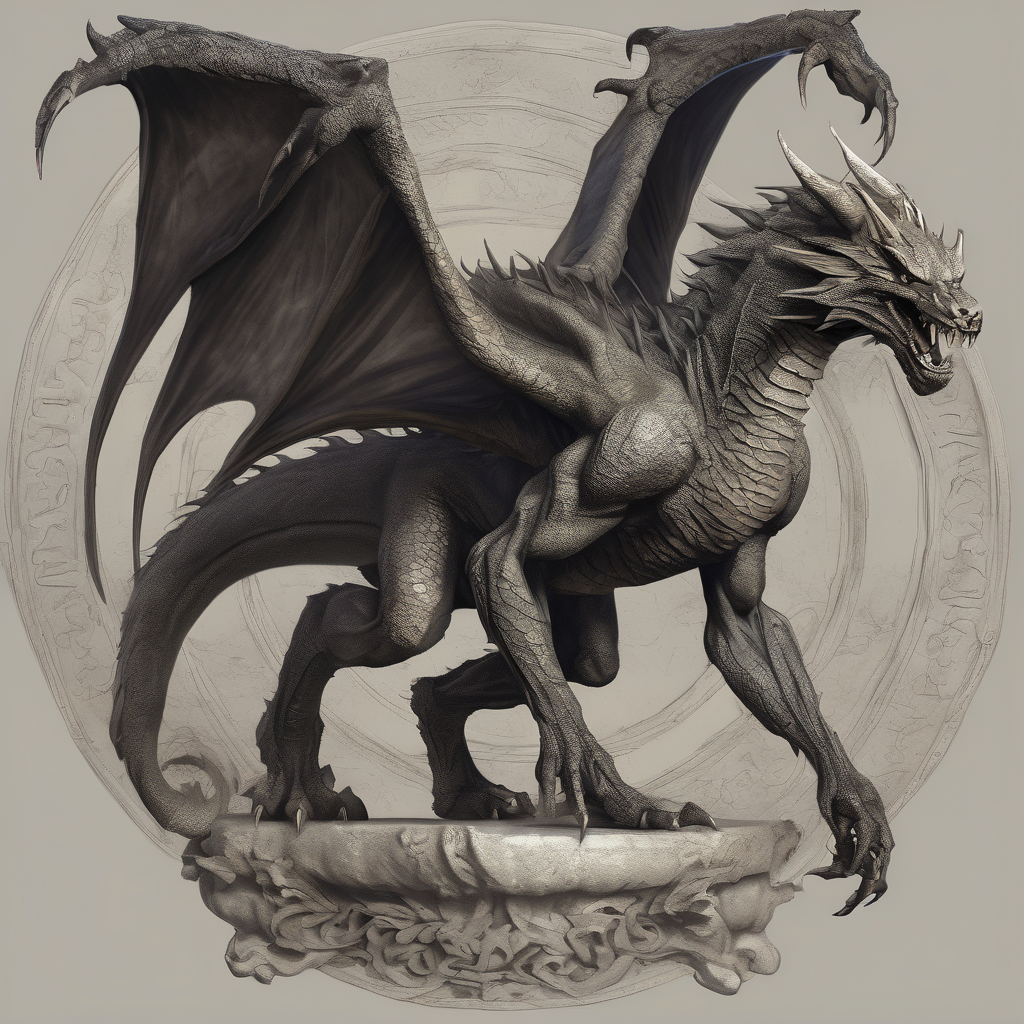
Dragons: Fire And Flight Legends
Dragons have fascinated people for centuries. These creatures breathe fire and soar through the skies. They appear in many stories and myths worldwide. Dragons symbolize power, mystery, and danger. Their legends inspire many modern monsters in books, movies, and games.
Dragons come in many shapes and sizes. Some are fierce and destructive. Others are wise and protective. Their role changes depending on the culture. Understanding these differences reveals why dragons remain popular today.
Eastern Vs Western Dragons
Eastern dragons are long and snake-like. They have no wings but can fly. These dragons often bring good luck and rain. People see them as wise and kind creatures.
Western dragons look different. They have large wings and sharp claws. Their bodies are heavy and covered in scales. These dragons often guard treasure or fight heroes. They represent danger and strength.
Both types share fire and flight as key traits. They show how cultures imagine power in different ways.
Dragons In Pop Culture
Dragons appear in many movies and books today. They can be heroes or villains. Stories like “Game of Thrones” and “Harry Potter” made dragons famous again.
In video games, dragons are often big bosses to defeat. They challenge players with fire and flight attacks. Their presence adds excitement and danger.
Dragons also appear in art and toys. They continue to inspire new stories and creations. Their timeless appeal keeps them alive in modern culture.
Vampires: Bloodsucking Myths
Vampires are among the most famous mythical creatures in the world. These bloodsucking beings have haunted stories for centuries. Their dark and mysterious nature fascinates many people. The idea of a creature that drinks blood to live is both scary and intriguing. Understanding where vampire myths began helps us see how they shaped modern monster tales.
Origins In Folklore
Vampire legends started in Eastern Europe. People told stories about undead beings that rose at night. These creatures fed on the blood of the living to survive. Early tales described vampires as bloated and pale. Fear of disease and death made these stories spread fast. Many cultures had their own versions of vampire-like monsters.
Villagers used rituals to protect themselves from vampires. Garlic, holy water, and wooden stakes became common defenses. These myths explained sudden deaths or illnesses before science understood them. The vampire’s image grew stronger with each telling.
Evolution Into Modern Horror
In the 18th and 19th centuries, vampire stories changed. Writers made vampires more charming and intelligent. Bram Stoker’s “Dracula” is the most famous vampire novel. It shaped how we see vampires today. The vampire became a symbol of danger and seduction.
Films and TV shows added new traits to vampires. They gained super strength and the ability to transform. Modern vampires often struggle with their dark nature. This made them more complex and relatable characters. Vampire myths continue to inspire new stories and monsters.
Werewolves: Shape-shifting Shadows
Werewolves have haunted stories for centuries. These creatures change from humans to wolves under the full moon. They live in the shadows, blending fear and mystery. Their tales inspire many modern monsters. The idea of a person turning into a beast fascinates and terrifies people worldwide.
The shape-shifting nature of werewolves connects deeply with human fears. Losing control and becoming something wild strikes a primal chord. Many movies and books use this theme to create thrilling stories. The legend of werewolves shows how myths evolve into today’s monsters.
Lunar Connections
The full moon is key in werewolf stories. It triggers the transformation from human to wolf. This link to the moon adds a magical feel. The moon’s light shines on the dark side of human nature. Ancient people believed the moon had power over animals and people. This belief made the werewolf legend stronger and more believable.
Cultural Variations
Different cultures have unique werewolf tales. In Europe, werewolves are often cursed humans. In Asia, similar creatures might have different shapes or causes. Some stories say magic or punishment causes the change. Others say the person chooses to become a wolf. These variations show how the werewolf myth adapts to local beliefs. The core idea stays the same: a dangerous shape-shifter hides among people.
Gorgons: Stone-faced Terrors
Gorgons are terrifying creatures from ancient myths. They had snakes for hair and could turn people to stone. Their gaze alone was deadly. This power made them feared across stories and cultures. Modern monsters often borrow traits from these stone-faced terrors. Their image still haunts movies, books, and games today.
The most famous Gorgon was Medusa. She was once a beautiful woman but cursed to become a monster. Her story has inspired many monster designs in modern fiction. The idea of a creature that can petrify victims remains powerful and scary. Gorgons show how myths shape the monsters we fear now.
Medusa’s Legacy
Medusa is the best-known Gorgon. Her face, surrounded by writhing snakes, is iconic. Artists and writers use her image to symbolize danger and power. Many films and books create villains based on her look and story. Medusa’s story warns of punishment and transformation. She blends beauty with horror, making her unforgettable.
Her story also touches on themes of victimhood and revenge. Modern monsters often carry these ideas too. Medusa’s legacy lives on in both horror and fantasy genres. She remains a symbol of fear and fascination.
Symbolism In Myth
Gorgons represent more than just monsters. They symbolize fear of the unknown and danger. Their ability to turn people to stone suggests paralysis and helplessness. In myths, they warn against vanity and pride. The snakes on their heads add a sense of wildness and chaos.
These symbols still resonate today. Modern monsters inspired by Gorgons often carry similar meanings. They remind us of deep fears and warnings. Gorgons are a powerful example of how old myths shape new stories.
Kraken: Sea Monster Legends
The Kraken is one of the most famous sea monsters in myth and legend. It is said to be a giant creature that lives deep in the ocean. Sailors feared the Kraken because it could drag entire ships under the water. Stories of this beast have fascinated people for centuries. It inspired many modern tales of sea monsters and giant creatures in popular culture.
Norse And Scandinavian Roots
The Kraken’s story comes from Norse and Scandinavian myths. Early sailors in these regions told tales of enormous sea creatures. These beasts were said to look like giant squids or octopuses. They lived near the coasts and attacked ships that came too close. These legends grew over time, adding mystery and fear to the sea. The Kraken became a symbol of the unknown dangers beneath the waves.
Impact On Nautical Stories
The Kraken shaped many old sea stories and sailor tales. It was a warning of the ocean’s power and danger. Writers and storytellers used the Kraken to create thrilling adventures. The creature appears in books, movies, and video games. Its image as a giant tentacled monster remains popular today. The Kraken still captures the imagination of people who love sea myths and legends.
Chimeras: Hybrid Horrors
Chimeras are mythical creatures made of parts from different animals. They often appear as beasts with the body of a lion, the head of a goat, and a snake’s tail. These strange mixes sparked fear and wonder in ancient stories. Their odd shapes made them perfect symbols of chaos and danger.
These hybrid monsters show how ancient people imagined the unknown. They combined familiar animals into one creature to create something new and terrifying. This idea still shapes many modern monsters today. The chimera’s blend of parts makes it a powerful symbol of unnatural fear.
Mythical Origins
The chimera first appears in Greek mythology. It was seen as a fire-breathing monster. The creature had the front of a lion, the middle of a goat, and the tail of a serpent. It caused destruction and fear wherever it went. Heroes like Bellerophon were said to defeat this beast. The chimera represented the chaos of nature and the unknown.
Stories about chimeras also exist in other cultures. Many myths tell of creatures made from mixed animals. These tales showed dangers beyond the natural world. They warned people of monsters that break the rules of nature.
Modern Interpretations
Today, chimeras inspire many modern monsters in books and movies. Creators mix animal parts to form new creatures. These hybrids appear as terrifying villains or strange beings. Science fiction and horror often use chimeras to explore fear of mutation and change.
Chimeras symbolize things that are unnatural or out of control. They remind us of fears about science and genetics. The idea of mixed creatures taps into deep feelings of unease. This makes chimeras lasting symbols in modern horror and fantasy.
Wendigos: Spirits Of The North
The Wendigo is a terrifying creature from the cold forests of the North. It is more than a monster; it is a spirit that haunts the wilderness. Stories of the Wendigo have been told for centuries by Indigenous peoples. This creature symbolizes deep fears about hunger and madness. Its legend has inspired many modern monsters in books, movies, and games.
Indigenous Roots
The Wendigo comes from the beliefs of Native American tribes like the Algonquin. It is a spirit tied to winter and starvation. The Wendigo is said to possess humans, turning them into cannibalistic beings. This spirit warns against greed and selfishness. Many stories teach respect for nature and community through the Wendigo legend. It is a powerful symbol in Indigenous culture.
Themes Of Hunger And Madness
The Wendigo represents extreme hunger that never ends. It drives victims to madness and violent acts. The more the Wendigo feeds, the more it craves. This endless hunger shows the danger of losing control. It is a reminder of the harshness of winter and isolation. Modern monsters often borrow this theme of insatiable hunger and madness. It creates a chilling and unforgettable villain.
Banshees: Harbingers Of Doom
Banshees are eerie spirits from old Irish tales. They are known for their chilling wails. These cries warn families of a coming death. The banshee’s scream is a sign of sorrow and fear. This mythical creature has shaped many modern monster stories. It represents the unknown and the fear of loss.
The banshee’s legend blends fear with mystery. It continues to inspire writers and filmmakers. Its story connects deeply to human emotions. The banshee reminds us of the thin line between life and death.
Irish Folklore
In Irish folklore, banshees are female spirits. They often appear as old women or young maidens. Their role is to warn families of death. The banshee’s cry is heard near homes of those doomed to die. This spirit is linked to certain Irish families. Only these families can hear her mournful song.
The banshee is not evil but a messenger. She mourns the loss before it happens. Her presence is both a curse and a blessing. The banshee’s legend shows the deep respect for death in Irish culture.
Role In Storytelling
Banshees add tension and fear in stories. Their cries create a spooky atmosphere. Writers use banshees to signal danger or loss. This mythical figure helps explore themes of fate and death. Banshees often appear at key moments in tales. Their presence reminds characters and readers of mortality.
Many modern monsters borrow traits from banshees. The idea of a warning spirit is powerful. It connects old beliefs with new fears. The banshee’s story makes horror more emotional and real.
Cerberus: Guardians Of The Underworld
The Cerberus is a legendary creature from Greek mythology known as the guardian of the underworld. This monstrous dog has three heads and a serpent’s tail. It stands at the gates of Hades, stopping the dead from leaving and the living from entering. Cerberus has inspired many modern monsters in movies, books, and games. Its fierce and protective nature makes it a symbol of power and fear.
Mythical Duties
Cerberus’s main job is to guard the entrance to the underworld. It prevents souls from escaping after death. It also stops any living being from entering without permission. This duty makes Cerberus a key figure in the balance between life and death. Heroes like Heracles had to face Cerberus during their quests. This shows the creature’s role as a great challenge to overcome.
Cultural Significance
Cerberus represents the boundary between life and the afterlife. It reminds people of death’s inevitability and the power of the gods. In art and literature, Cerberus symbolizes protection and danger. Many modern stories use Cerberus as a model for fierce guardian monsters. Its image appears in tattoos, logos, and fantasy worlds. The creature’s lasting influence proves its importance in culture and myth.
Mothman: Modern Myth-making
The Mothman is one of the most fascinating modern mythical creatures. It blends mystery, fear, and curiosity into a single legend. This creature has inspired many stories, movies, and even urban myths. Its tale shows how modern myths can grow from simple sightings and grow into powerful legends.
Origins And Sightings
The Mothman first appeared in 1966 near Point Pleasant, West Virginia. Several people reported seeing a large creature with glowing red eyes and wings. It was said to fly fast and silently at night. These sightings lasted about a year and caused widespread fear. People described the Mothman as part man, part moth. The creature’s strange behavior sparked many questions and theories. Some believed it was a sign of disaster. The legend grew as more people claimed to see it.
Influence On Urban Legends
The Mothman became a symbol of mystery and warning in urban legends. Stories link the creature to the collapse of the Silver Bridge in 1967. This tragedy deepened the fear and fascination with the Mothman. It now appears in books, films, and festivals. The creature influences many other modern monsters and legends. It shows how a local sighting can turn into a global myth. People are drawn to the unknown and the strange stories that come with it. The Mothman remains a key example of how myths shape modern culture.
Frequently Asked Questions
What Are The Most Famous Mythical Creatures Inspiring Monsters?
The most famous mythical creatures include dragons, werewolves, vampires, and krakens. These beings have shaped many modern monster stories and movies. Their legends influence today’s horror and fantasy genres significantly.
How Do Mythical Creatures Influence Modern Monster Designs?
Mythical creatures provide original traits like scales, claws, or supernatural powers. Designers use these features to create unique and terrifying modern monsters. This blend maintains cultural roots and adds fresh creativity to monster design.
Which Mythical Creature Inspired The Vampire Myth?
The vampire myth is mainly inspired by Eastern European folklore creatures like the Nosferatu and strigoi. These legends describe undead beings feeding on blood. They laid the foundation for today’s vampire stories in books and films.
Why Are Dragons Popular In Monster Mythology?
Dragons symbolize power, danger, and mystery across cultures. Their massive size and fiery breath make them a perfect monster template. They appear in many myths and continue to inspire books, games, and movies worldwide.
Conclusion
Mythical creatures have shaped many modern monsters we know today. Their stories continue to inspire books, movies, and games. These ancient legends mix mystery and fear in unique ways. They remind us how imagination can create lasting symbols. Monsters often reflect human hopes and fears through time.
Exploring these myths helps us understand culture and history better. The magic of these creatures never truly fades away. They live on in our stories and dreams.
